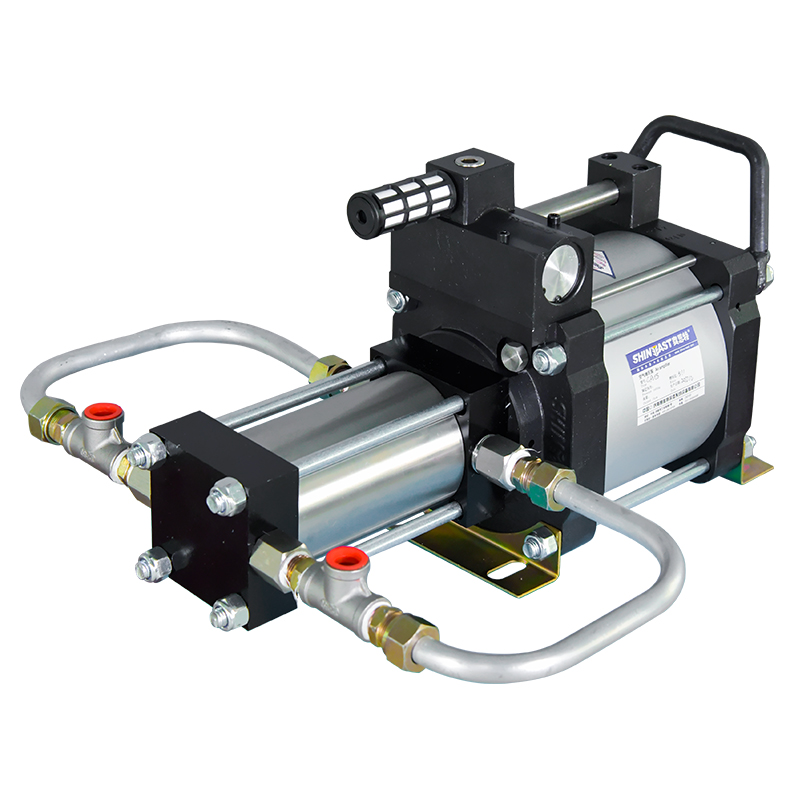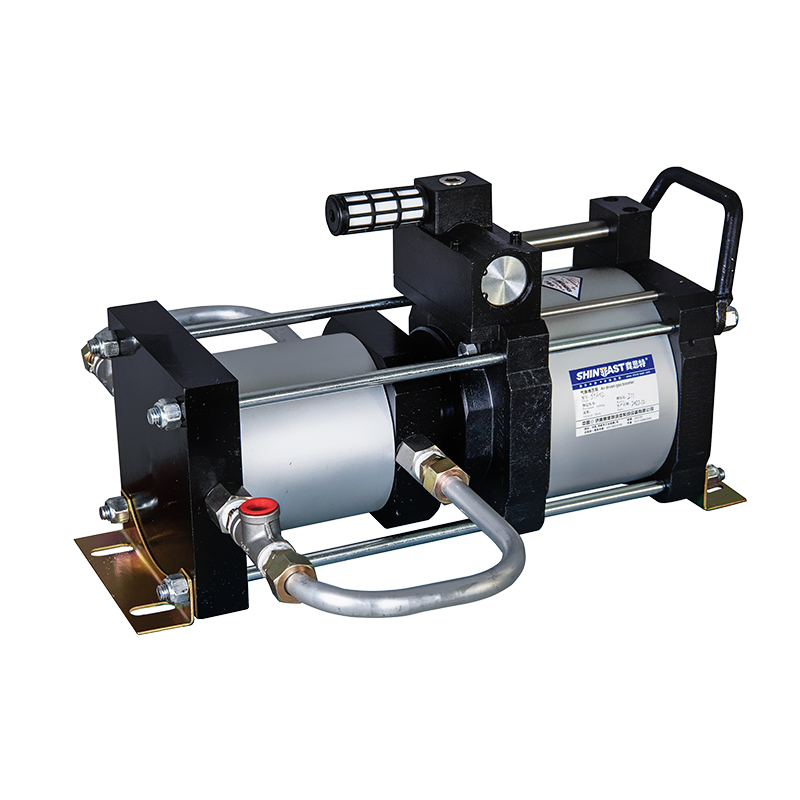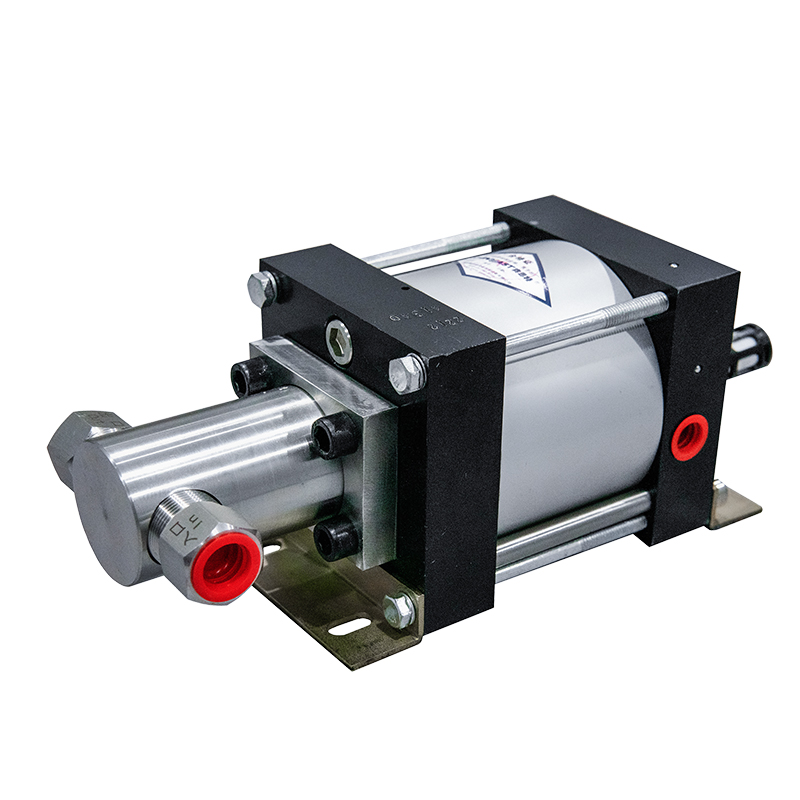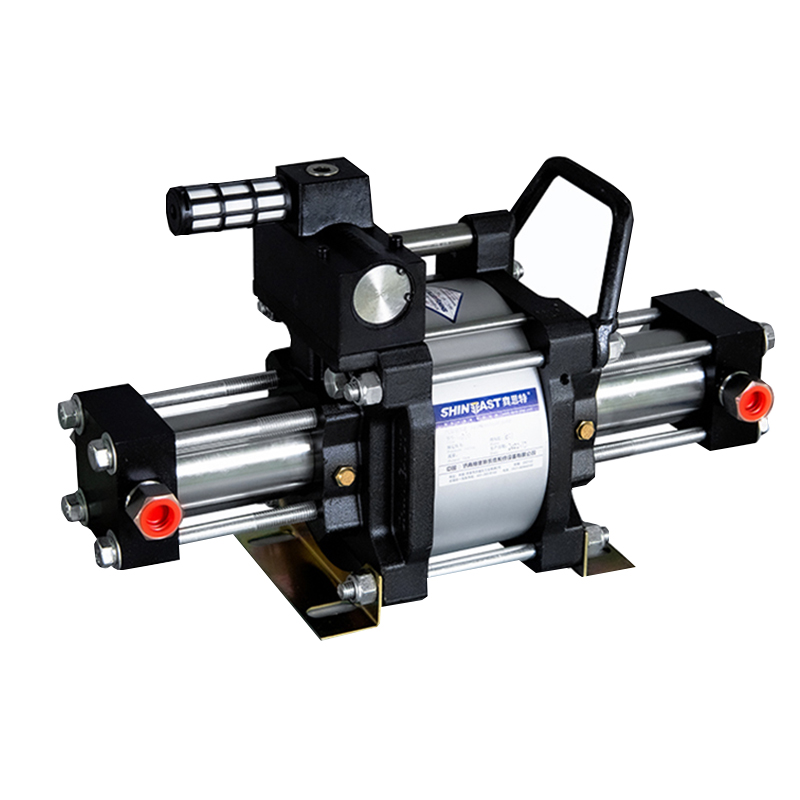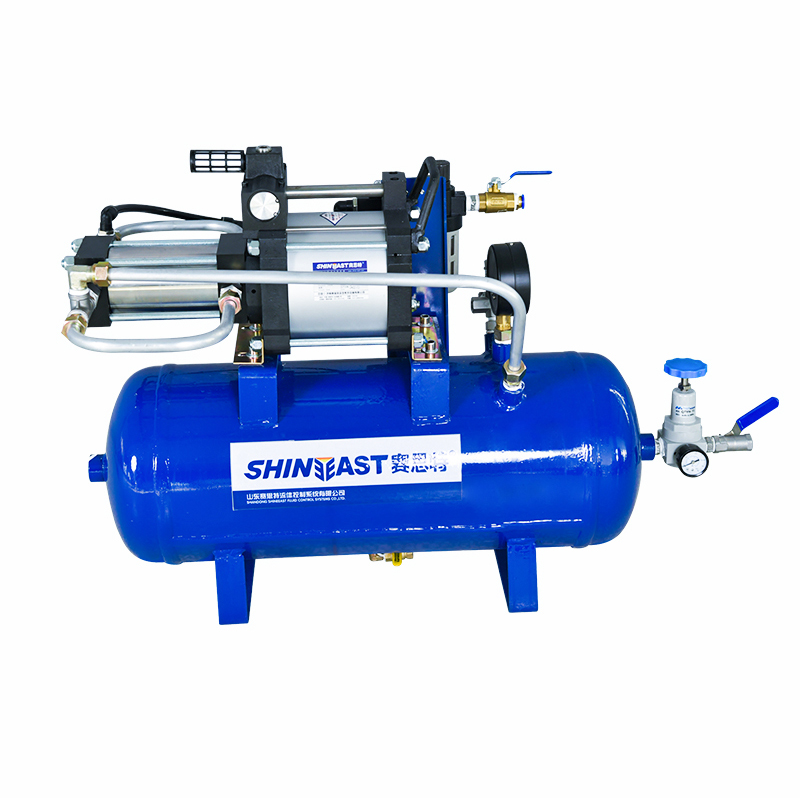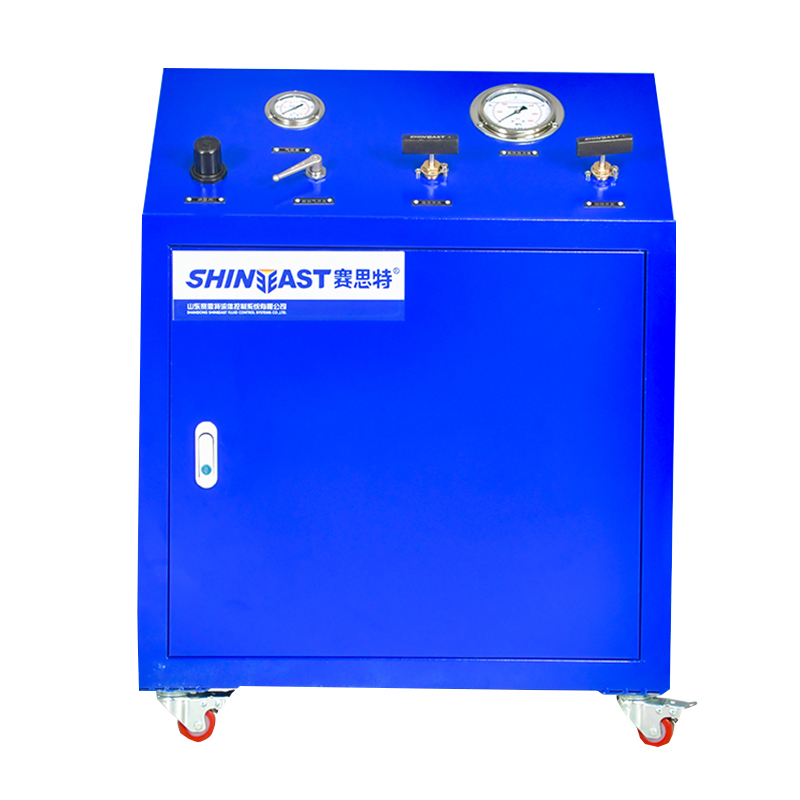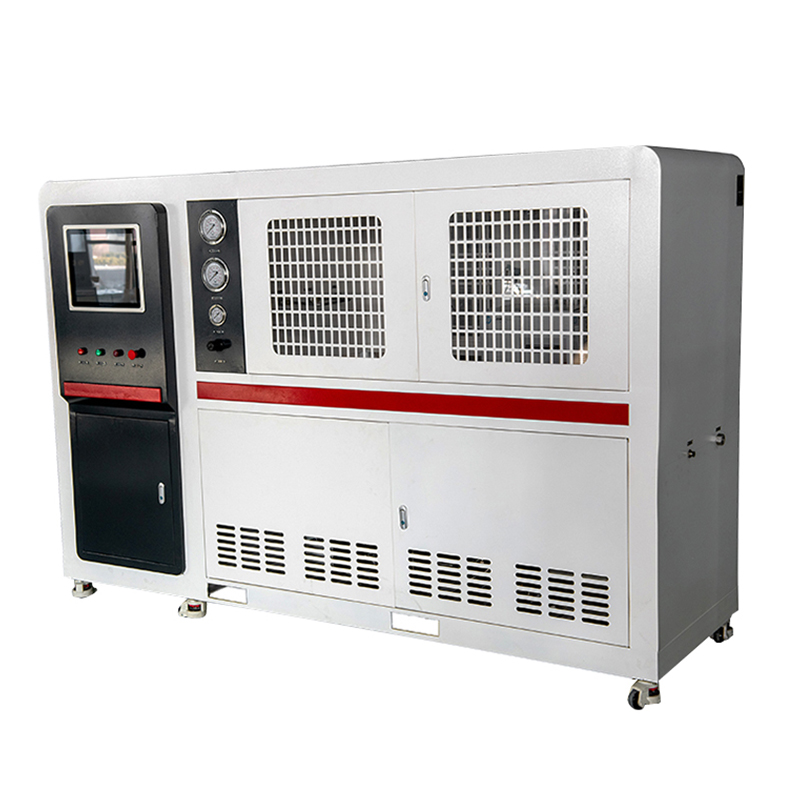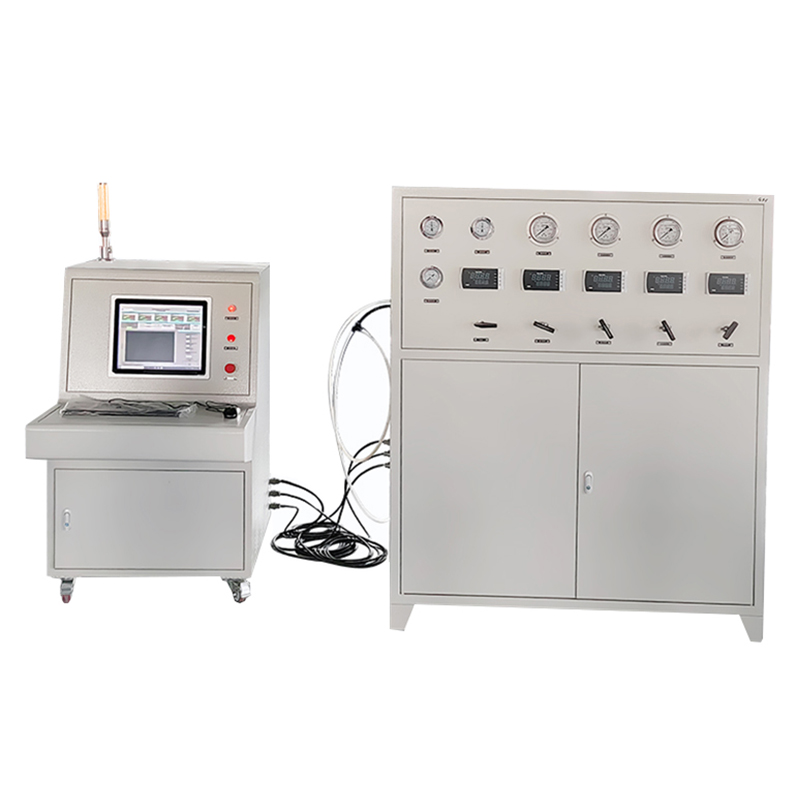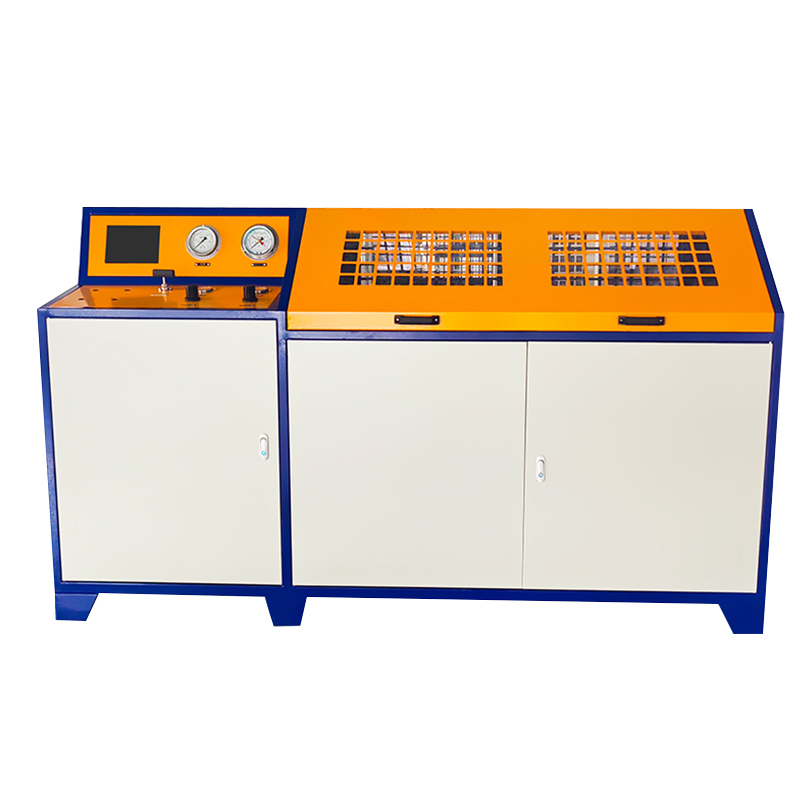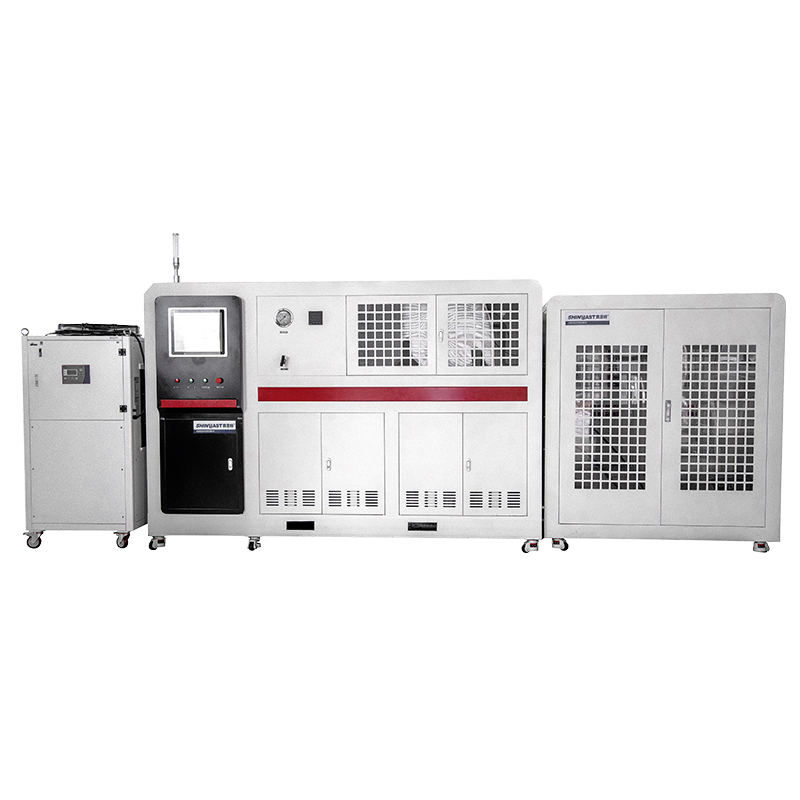Pressure and explosion test of air conditioning piping system
The pressure and explosion test of the air conditioning system pipeline is a key link in detecting the safe operation of the air conditioning system, and its accuracy and reliability directly affect the overall performance of the system. Our company, with its professional technical strength and rich industry experience, has successfully developed an air conditioning pipeline explosion test bench, providing strong technical support for pressure explosion testing of air conditioning system pipelines.
In the pressure explosion test of the air conditioning system pipeline, the customized explosion test bench demonstrated excellent performance. The test bench adopts an advanced pressure control system, which can accurately control the pressure changes inside the pipeline, thereby simulating various pressure environments in actual work. At the same time, the test bench is equipped with a high-precision data acquisition and analysis system, which can record and analyze various data during the testing process in real time, providing strong data support for subsequent evaluation and improvement.
In addition, the blasting test bench also pays attention to safety and stability. During the testing process, the test bench can automatically detect abnormal conditions in the pipeline, such as abnormal pressure rise, leakage, etc., and promptly alarm when abnormalities are detected, ensuring the safety and controllability of the testing process. At the same time, the structural design of the test bench also fully considers stability and durability, and can maintain stable performance in long-term, high load working environments.
The pressure burst test of the air conditioning system pipeline is to ensure that the pipeline of the air conditioning system can withstand conditions higher than normal working pressure. Prevent pipeline rupture or leakage caused by pressure overload or other reasons after the system is put into use. Inspect the pressure resistance of pipeline materials, welding quality, and sealing of connection parts.
Test preparation
Testing equipment: high-pressure pump, pressure gauge, seal.
Testing medium: Inert gases (such as nitrogen) or liquids (such as water) are usually used, but it is important to ensure that the testing medium does not undergo chemical reactions with the pipeline material.
Test pressure: It is usually set at 1.5 times the design pressure of the pipeline (sometimes different according to standard requirements) and maintained for a certain period of time.
testing procedure
Pipeline sealing inspection: Ensure that all pipeline connections, valves, joints, and other parts are properly sealed to avoid leakage during testing.
Inflation or liquid injection: Slowly inject gas or liquid into the pipeline system and monitor pressure changes.
Stable pressure: After reaching the target pressure, maintain it for a certain period of time (usually 10 to 30 minutes) and observe whether the pressure gauge shows a significant decrease.
Leakage detection: during the test, use foam liquid or other detection means to check whether there is leakage at the pipe connection point.
End of test: If there is no leakage or rupture during the test and the pressure remains stable, the test is qualified.
The pipeline should be able to withstand the test pressure without leakage or rupture during the testing period. After testing, the reading of the pressure gauge should be stable and not significantly decrease. The surface of the pipeline should not have cracks, deformations, or other obvious defects.
During testing, it is necessary to ensure that operators wear necessary safety equipment, such as protective goggles, gloves, etc. When conducting high-pressure testing, stay away from the pipeline system to avoid injury caused by explosions or leaks. When conducting gas pressure testing, it is necessary to ensure the stability of the inflation system and avoid danger caused by rapid increase in gas pressure.
After passing the test, the system can enter the normal use phase, and all stress test results need to be recorded and archived. If the test fails, the pipeline needs to be repaired or replaced and tested again until it meets the standards. This type of testing is usually conducted after the installation or maintenance of the air conditioning system to ensure the safety and reliability of the piping system.
In the pressure explosion test of the air conditioning system pipeline, the customized explosion test bench demonstrated excellent performance. The test bench adopts an advanced pressure control system, which can accurately control the pressure changes inside the pipeline, thereby simulating various pressure environments in actual work. At the same time, the test bench is equipped with a high-precision data acquisition and analysis system, which can record and analyze various data during the testing process in real time, providing strong data support for subsequent evaluation and improvement.
In addition, the blasting test bench also pays attention to safety and stability. During the testing process, the test bench can automatically detect abnormal conditions in the pipeline, such as abnormal pressure rise, leakage, etc., and promptly alarm when abnormalities are detected, ensuring the safety and controllability of the testing process. At the same time, the structural design of the test bench also fully considers stability and durability, and can maintain stable performance in long-term, high load working environments.
The pressure burst test of the air conditioning system pipeline is to ensure that the pipeline of the air conditioning system can withstand conditions higher than normal working pressure. Prevent pipeline rupture or leakage caused by pressure overload or other reasons after the system is put into use. Inspect the pressure resistance of pipeline materials, welding quality, and sealing of connection parts.
Test preparation
Testing equipment: high-pressure pump, pressure gauge, seal.
Testing medium: Inert gases (such as nitrogen) or liquids (such as water) are usually used, but it is important to ensure that the testing medium does not undergo chemical reactions with the pipeline material.
Test pressure: It is usually set at 1.5 times the design pressure of the pipeline (sometimes different according to standard requirements) and maintained for a certain period of time.
testing procedure
Pipeline sealing inspection: Ensure that all pipeline connections, valves, joints, and other parts are properly sealed to avoid leakage during testing.
Inflation or liquid injection: Slowly inject gas or liquid into the pipeline system and monitor pressure changes.
Stable pressure: After reaching the target pressure, maintain it for a certain period of time (usually 10 to 30 minutes) and observe whether the pressure gauge shows a significant decrease.
Leakage detection: during the test, use foam liquid or other detection means to check whether there is leakage at the pipe connection point.
End of test: If there is no leakage or rupture during the test and the pressure remains stable, the test is qualified.
The pipeline should be able to withstand the test pressure without leakage or rupture during the testing period. After testing, the reading of the pressure gauge should be stable and not significantly decrease. The surface of the pipeline should not have cracks, deformations, or other obvious defects.
During testing, it is necessary to ensure that operators wear necessary safety equipment, such as protective goggles, gloves, etc. When conducting high-pressure testing, stay away from the pipeline system to avoid injury caused by explosions or leaks. When conducting gas pressure testing, it is necessary to ensure the stability of the inflation system and avoid danger caused by rapid increase in gas pressure.
After passing the test, the system can enter the normal use phase, and all stress test results need to be recorded and archived. If the test fails, the pipeline needs to be repaired or replaced and tested again until it meets the standards. This type of testing is usually conducted after the installation or maintenance of the air conditioning system to ensure the safety and reliability of the piping system.
CONTACT US
Please use the form below to get in touch.
If you need a reply we will get in touch as soon as possible.

